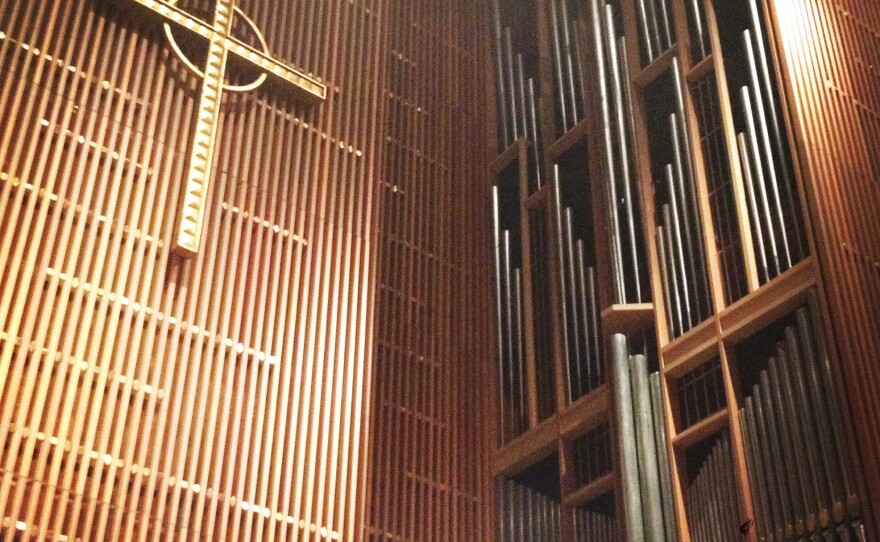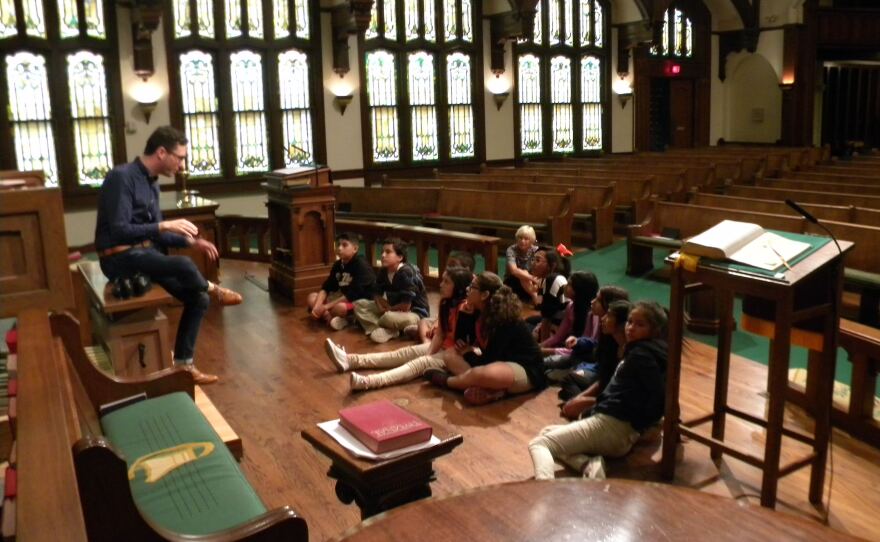“When I was 10, I saw a pipe organ in church for the first time. I was with my fourth grade class, and we were walking into the church for Mass, and I turned around and looked up at the organ, and I was just in awe. I was mesmerized by the sight and sound of it,” said Christopher Houlihan, now 26, and one of the best young organists of his generation.
“You have all of the buttons, and the keyboards, and the feet are moving, and opening and closing swell pedals,” Houlihan added, noting that as a child, he was equally fascinated by the mechanics and musicality of the pipe organ.
On a chilly, windy Tuesday night, Houlihan’s performance warmed the halls of the Marguerite B. Parker chapel on the Trinity University campus. The immortal music of Bach, Ravel, Charles-Marie Widor, and Widor’s pupil, Louis Vierne — the principal organist at the cathedral of Notre-Dame de Paris for nearly four decades at the beginning of the 20th century — swirled through the air, thrilling the audience of more than 200.
Two of the works on the program were arranged by Houlihan himself, and one, an adaptation of Bach’s “Italian Concerto,” inspired at least one audience member to remark that Houlihan’s version was the definitive take. “It’s the kind of thing that Bach did with concertos of Vivaldi, arranging them for solo organ,” Houlihan pointed out. “He transcribed movements from [his own] cantatas to perform on the organ. It’s actually a sound that Bach would know more than the sound of a modern piano… I love playing it on the organ.”
Houlihan’s other arrangement on the program was Maurice Ravel’s “Vocalise in the form of a Habanera,” which, he said, brought out the “mysterious” and “sensual” side of the organ. Equally as beautiful at the concert was Houlihan’s rendition of Widor’s “Andante Sostenuto,” from the “Symphonie Gothique.” Heard in the audio link below, the tranquil music has one beautiful melody follow another.
Throughout the evening, Houlihan appeared relaxed as he addressed the audience in between each selection, but when he sat at the keyboard, a deep focus came over him, and he began to sway and move with the music, clearly focused on his art, body, and soul. “I don’t think about it too much,” Houlihan said later of his onstage movement.
“It’s just always something that I’ve done. [During practice] I tend to be very still, but in performance, I seem to move around quite a bit,” he said, with a laugh. “It’s not something I think about doing or put on, it just feels natural to me and helps me connect with the moment.”
The physicality is also explained by Houlihan’s approach to the instrument itself.
“[Playing organ] is really more like… being a conductor and conducting a whole orchestra, because a great organ has really different sounds and instruments,” he explained. “And as an organist, you’re introducing different instruments, and conducting this great orchestra. From sounds that whisper and purr to sounds that just rip your head off, and everything in between.” And as was originally intended, when the organ was created centuries ago, it all sounded divine.




